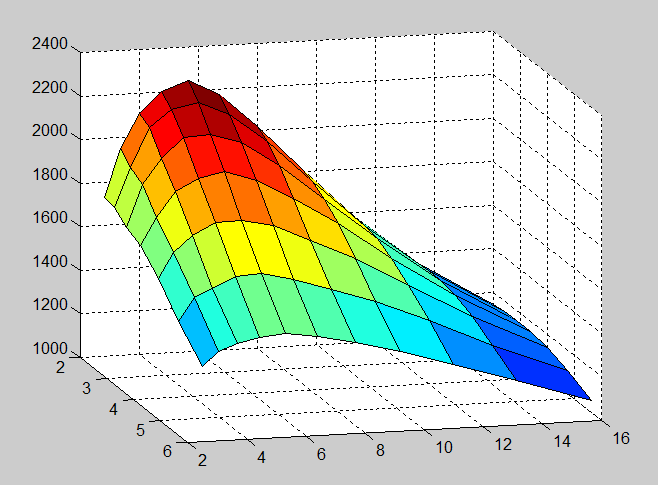I ran the curves from yesterday’s post for the simulated Zeiss Otus 55mm f/1.4 lens.
MTF50, cycles/picture height, in three dimensions with no AA filter:
In two dimensions, with f-stop as the horizontal axis:
You can see that there is not much improvement as we go from a pitch of 2.4 um to one of 2 um.
In two dimensions, with pitch as the horizontal axis:
You can see that making the pitch finer doesn’t help much at all at f/16.
MTF50 in three dimensions with a 4-way beam-splitter AA filter:
In two dimensions, with f-stop as the horizontal axis:
More sensor resolution helps even to 2 um.
In two dimensions, with pitch as the horizontal axis:
More sensor resolution helps, even — marginally — at f/16.






Wow, wonderful stuff. The post to end all posts on the subject, nice to see it all in one place.
Interesting that with an AA it helps to shrink pixels all the way to 2 microns. I assume that you are keeping the AA at a constant per pixel ‘strength’, so what we are actually seeing is the benefit of an increasingly smaller AA shift in microns, effectively approaching AAless status when mixed with diffraction and aberrations.
It appears as if things level off quickly as we approach pitches of 1 micron and less (obviously AAless). Will there ever be a point in having a less than 1 micron pitch sensor?
Jack, as the pixel pitch shrinks, the whole AA filter does too, so that the offset of the beam-splitters is always 0.375 of the current pixel pitch.
I can run some tests for really fine pitches. Once the lens is feeding the same light to all four pixels in the Bayer CFA cell, we won’t have false color any more, and once two adjacent CFA cells are getting the same light there won’t be any more signal to do downstream processing on.
Jim
Jim, very interesting stuff that you’re presenting here! I have one request related to the graphs presenting “cycles per picture height” on one of the axis. As “cycles per picture height” directly translate into “Megapixels” for let’s say widely used APS-C and FF sensors, would it be possible adding graphs showing “Mpix” numbers instead of “cycles per picture height”? I believe with this the readers directly get a sense where Mpix becomes the limiting factor.
Here’s why I don’t do that:
http://blog.kasson.com/?p=10561
Jim